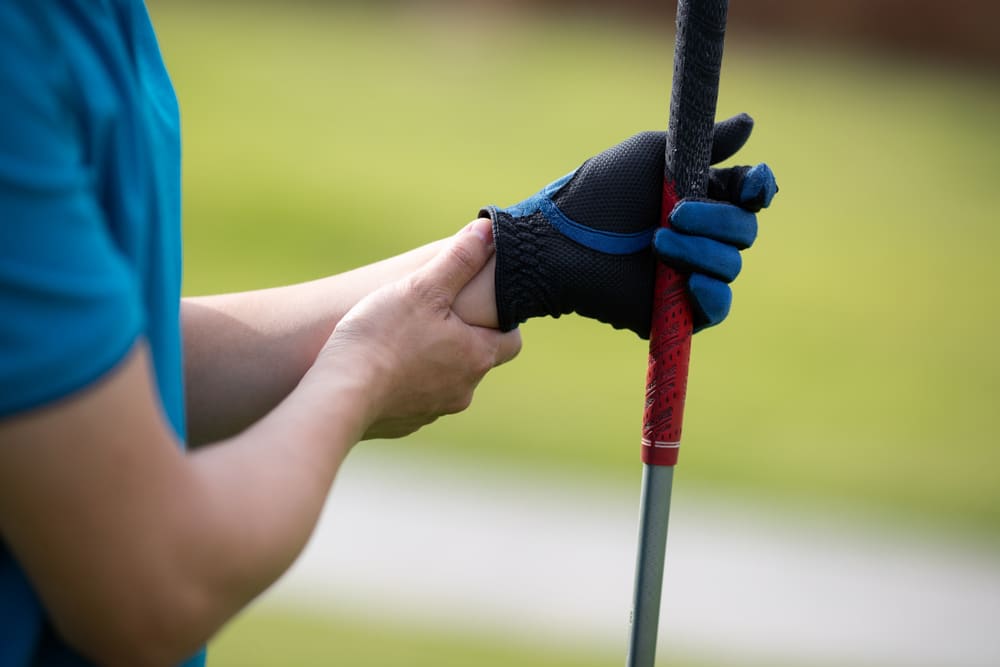
Imagine stepping onto the golf course, ready to sink that perfect shot, only to be sidelined by a painful wrist injury. It’s a golfer’s nightmare. One that can easily derail your game and your season. But here’s the good news for all the golf lovers out there. Preventing golf wrist injuries is not only possible, it’s essential for long-term success. In this article, we’ll dive into the essential tips and proven techniques that will protect your wrists, keep you in the game, and elevate your performance. Whether you’re a seasoned pro or a weekend warrior, your wrists are your secret weapon—let’s keep them strong and injury-free!

Tips for Safe Play on the Course
Millions of people worldwide enjoy the popular sport of golf, which promotes physical activity and relaxation. But it has the same danger of golf wrist injury as other sports, especially to the hands. Strains, sprains, and overuse injuries brought on by the repetitive actions required to swing a club are common golf hand injuries. On the course, these injuries may result from poor technique, excessive exertion, or insufficient warm-up.
Golfers should emphasize good technique and warm-up activities before hitting the course to reduce the risk of hand injuries. Hand strain can also be avoided by ensuring the clubs fit the correct size. In addition, drinking enough water and pausing throughout sports might help prevent injuries.
Regular practice and training can decrease and enhance hand strength and injury risk. It is advisable to seek advice on technique and injury prevention methods from a healthcare provider or golf instructor. These precautions allow golfers to enjoy their time on the course and protect themselves from common hand injuries.
Tips to Avoid Meniscus Tear
Although it’s fun, playing golf carries some risks, particularly for the hands and golf wrist injury. Meniscus tears, a painful ailment that can seriously affect your game and general well-being, are among the frequent conditions.
Proactive steps are crucial to prevent golfing hand injuries, including meniscus tears. First, warm up your muscles and joints properly before heading out on the course. Second, maintain proper swing technique to lessen the tension on the hands and wrists. Proper strength training focused on the hands, wrists, and forearms can also avoid injuries.
In addition, playing with properly fitted equipment and taking regular pauses can minimize the risk of overuse injuries. If you have ongoing pain or discomfort, pay attention to your body and get help from a doctor. By putting safety first and heeding our advice, you can enjoy the game of golf while keeping your hands safe.

Tips for Hand, Knee, and Shoulder Health
Millions of people worldwide love golf, yet risks are involved such as golf wrist injury. Players frequently experience shoulder problems, knee problems related to their grip, and hand pain from the golf grip. Some important guidelines should be followed to prevent these injuries and guarantee a pain-free game.
First, ensure your golf grip is not overly tight, as this can cause pain and discomfort in the hands. Instead, keep your grip pressure loose throughout the swing. Pay particular attention to your posture and body mechanics to avoid stressing your knees and shoulders. To increase flexibility and stability, perform frequent stretching and strengthening exercises focusing on these regions.
Invest in high-quality gear that fits your body type and swing style, including appropriately sized clubs and supportive shoes. Lastly, to prevent overuse injuries, pay attention to your body and take breaks when required. Implementing these measures into your practice allows you to play golf and avoid frequent knee, shoulder, and hand problems.
Tips to Safeguard Your Wrist and Maintain Performance
Although it’s a fun hobby, golfing carries some risks, particularly for the knee and wrist joints. Golfers frequently have hand and wrist pain due to the repetitive swinging motion required for the game. These wounds have the potential to be painful and impair your game on the course. It’s critical to guard against wrist pain and hand injuries while playing golf.
First, ensure you warm up properly before starting the course, paying particular attention to wrist and hand stretches. To reduce joint stress, swing with perfect form and consider including wrist, hand, and forearm strengthening exercises in your workout regimen. Overuse injuries can also be avoided by wearing adequately suited equipment and frequently pausing while playing.
Pay attention to your body’s signals and get medical attention if you have chronic wrist or hand pain. By emphasizing joint health and taking preventive measures, you may enjoy golfing while lowering your risk of wrist and knee injuries.

Tips for Shoulder, Hand, and Hip Health
A well-liked sport that blends aspects of traditional golf with disc throwing is disc golf. Despite being a low-impact and enjoyable pastime, golfers are still at risk for injuries, especially to the hips, shoulders, and hands. Golf hand injuries are a frequent occurrence, frequently affecting the left hand as a result of repeated gripping and throwing motions. In addition, disc golf’s vigorous throwing and swinging motions can cause injuries to the shoulder joints. Hip injuries in golf are prevalent, particularly in players who rely heavily on their lower body for power.
Players should focus on good warm-up routines, which include mobility exercises and shoulder, hand, and hip stretches, to prevent these injuries. Using the right methods and tools, such as well-fitting discs and wrist braces, can also reduce the chance of damage. Cross-train with movements that tighten and strengthen the core to increase stability and avoid pressure on the shoulders and hips. Disc golf aficionados can play the game safely and reduce the chance of hip, shoulder, and golf hand injuries by implementing these preventive steps.
Conclusion
In conclusion, preventing injuries in golf requires a holistic approach, focusing on both wrist health and shoulder mobility. By ensuring proper technique, warm-ups, and incorporating strength exercises for the wrists, forearms, and shoulders, golfers can minimize the risk of common injuries and enhance performance. Additionally, investing in the right equipment and taking breaks during play further safeguards against strain and overuse. Whether you’re a beginner or seasoned player, prioritizing injury prevention through smart practices and personalized guidance can lead to a safer, more enjoyable golfing experience, allowing you to reach your full potential on the course.





